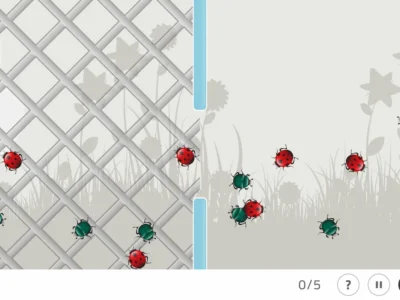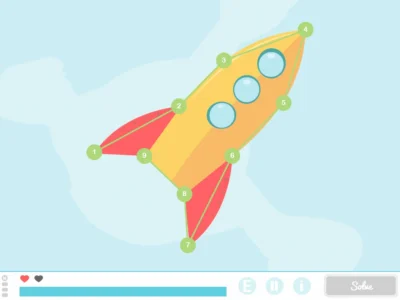Valentine’s Day is a special occasion to strengthen emotional bonds and find new ways to connect with your partner. But what if this year, in addition to celebrating love, you also invested in your cognitive and emotional wellbeing? Cognitive rehabilitation and stimulation for couples not only promotes personal development, but can also improve communication, empathy, and emotional connection. In this article, we explore how neuropsychology can become an ally in strengthening personal relationships.
What is cognitive stimulation and how is it applied to couples?
La cognitive stimulation is a set of exercises and activities designed to improve or maintain cognitive functions, such as memory, attention, language and reasoning. When performed as a couple, this practice not only contributes to individual wellbeing, but also strengthens emotional bonds.
Main benefits
- Prevention of cognitive decline: Regular practice helps keep the mind active and healthy.
- Strengthening the emotional bond: Working together on cognitive activities fosters collaboration and trust.
- Better communication: Cognitive activities for couples require dialogue and active listening, which can improve daily interaction.
- Stress reduction: Sharing moments of learning and achievement reinforces mutual support.
The biochemistry of love: the role of neurotransmitters
Love is not just an emotional experience; it also has a neurochemical basis. Understanding how neurotransmitters are involved in relationships can enrich therapeutic interventions and help professionals design more effective strategies for their patients.
Main neurotransmitters related to love and emotional bonding
- Dopamine: This neurotransmitter is related to pleasure and reward. During the early stages of falling in love, dopamine plays a key role in generating sensations of euphoria and the motivation to seek closeness with one’s partner.
- Oxytocin: Known as the “love hormone”, oxytocin is fundamental in forming emotional bonds. It is released during physical contact, such as hugs or caresses, and also during activities that promote emotional connection.
- Serotonin: This neurotransmitter influences mood and emotional balance. In relationships, healthy serotonin levels can help regulate emotional fluctuations, reducing anxiety and impulsive behaviors that we might exhibit, especially at the beginning of a relationship.
- Endorphins: Associated with happiness and stress reduction, endorphins also reinforce shared wellbeing in couples, especially during activities that involve physical exercise or laughter.
- Vasopressin: Together with oxytocin, it helps maintain emotional bonds during relationships and fosters a deep connection. In humans, it is believed to contribute to the feeling of attachment and responsibility within a relationship.
Therapeutic implications
Understanding the neurochemistry of love can help professionals to:
- Design activities that promote the release of these neurotransmitters, such as physical contact, laughter, or shared exercise.
- Educate couples about the importance of these neurochemical processes in strengthening their bonds.
- Identify imbalances that may be affecting the relationship dynamics and refer, if necessary, to mental health or medical specialists.
How cognitive rehabilitation can strengthen a relationship
Cognitive rehabilitation, on the other hand, focuses on restoring cognitive functions that have been affected by brain injuries, neurodegenerative diseases or aging. In the context of a couple, these therapies can be a powerful tool to face the challenges arising from these issues together.
Examples of applications
- Building new routines: Cognitive therapies often require lifestyle changes, and doing it as a couple makes adaptation easier.
- Mutual support in recovery: When one partner faces a cognitive challenge, participating together in rehabilitation sessions creates a sense of unity and commitment.
- Reinforcement of patience and understanding: Through rehabilitation, both learn to handle difficulties with empathy.
Cognitive activities to enjoy as a couple this Valentine’s Day
To celebrate Valentine’s Day, we have prepared a set of 10 adapted paper activities, ideal for working on different cognitive functions in an engaging way. Discover these exercises specially selected for your sessions!

Subscribe
to our
Newsletter
Activities for adults
Word Search
Strengthen your users’ selective attention with this classic word search game. The challenge? Find the hidden terms in a letter grid. An excellent way to exercise concentration and improve visual recognition.
Counting and Selecting
This exercise works both selective attention and working memory. The goal is to count how many times a specific object appears in an image. A perfect activity to stimulate observation and processing speed.
Labyrinth
Help your users develop their planning and sustained attention by guiding them to find the exit of a Labyrinth. This type of activity encourages decision making and spatial reasoning.
Count the stimuli
Ideal for improving processing speed, sustained attention, working memory and planning, this exercise consists of counting a set of elements within a given time. A challenge that stimulates concentration and quick reaction.
Repeated words
Boost your users’ working memory and selective attention by asking them to identify the repeated words in a text. This exercise improves error detection ability and verbal memory.
Word-Emotion Association
This playful exercise strengthens social cognition and vocabulary, by associating words with corresponding emotions. An excellent way to work on emotional intelligence while enriching patients’ vocabulary.
Activities for children
The Magic Word
A variant of Word Search, this activity adapted for the little ones allows them to exercise their selective attention by searching for hidden words in a letter grid. Fun and educational!
Exact objects
Based on the same principle as Counting and Selecting, this exercise helps children develop their working memory and selective attention by counting specific objects.
Escape the Labyrinth
Children’s version of Labyrinth, this labyrinth game helps them work on their planning and sustained attention, while having fun finding the exit.
Trap the Mice
Inspired by Count the stimuli, this exercise stimulates processing speed and sustained attention, asking children to count elements as fast as possible.
The role of neuropsychology in relationships
Neuropsychology studies the relationship between the brain and human behavior. In the context of relationships, it can offer tools to better understand how we interact and how to improve our connection with others.
Key areas where it can help
- Empathy: Understanding the other person’s cognitive processes facilitates empathy and reduces misunderstandings.
- Conflict resolution: Neuropsychology provides strategies to manage stress and improve communication during moments of tension.
- Mutual growth: Participating in cognitive activities allows both partners to grow together, strengthening the relationship.
Conclusion
This Valentine’s Day, neuropsychology professionals have an excellent opportunity to promote the importance of cognitive stimulation and rehabilitation for couples. These practices not only improve patients’ mental and cognitive health, but also strengthen their personal relationships. Involving couples in the therapeutic process can make a significant difference both individually and in their mutual connection.
If you liked this article on the benefits of cognitive rehabilitation and stimulation for couples, you may also be interested in these posts:
“This article has been translated. Link to the original article in Spanish:”
Este San Valentín descubre los beneficios de la rehabilitación y estimulación cognitiva en pareja








Leave a Reply